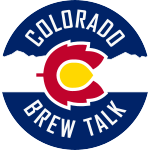Colorado Brew Talk Video Episode 3: Belgian Dubbel Tasting
In this Episode we had a sampling of the BJCP Trappist Ales Category, style #26B Belgian Dubbel. We chose La Trappe Dubbel and Chimay Red as the examples of the style to sample.
We also sampled a Homebrew Belgian Dubbel (recipe).
This the second installment of our exploration of the classic styles series. You can find the index of what we’ve covered at our “Exploring the Classic Styles” Page.
The Trappist Ale Category consists of Trappist Single, Belgian Dubbel, Belgian Tripel, and Belgian Dark Strong Ale (sometimes called a Quad). The brewer’s association has seperate, but similiar category for quads.
- Pronunciation – Some say “dubbel” some say it’s doo-bell. I can’t find a definitive answer.
- Singles for use in monastery only. Very hard to get. We’re skipping and going to dubbel
Brief history of Trappist Ales
- Started in France @ Le Trapp Monastery
- Fled France to escape Napoleons persecution of religion
- Settled in Belgium
- Started brewing beer to sell again in the ‘30’s
- Soon everyone was making “Trappist” beer
- Belgian Trade and Commerce court in Ghent rules on February 28, 1962 that only Cistercian (sis – TER – shen)monks can make it. Others will be known as Abbey beers
- Must meet certain criteria to be considered trappist
- International Trappist Association
- All products must be made within the immediate surroundings of the abbey;
- Production must be carried out under the supervision of the monks or nuns;
- Profits should be intended for the needs of the monastic community, for purposes of solidarity within the Trappist Order, or for development projects and charitable works.
- Must get certified – look for the seal
- Trappists make other stuff. Cheese, olive oil, chocolate, soaps
- Difference between Trappist and Abbey beers
- Non trappist monastery
- Produced by commercial brewery for profit using fake or defunct order
- Are the different styles parti-gyle?
- Maybe, but probably not. Could have been just dubbels and singles.
- Triples come along in the mid 19th century to combat the popularity of Czech pilsners
More Reading and Viewing
- Beer Syndicate – The Difference between a Belgian Quad and a Belgian Dark Strong Ale
- International Trappist Association
- Westvleteren beers – A brief history of Trappist beers
- ithinkaboutbeer.com – The Brewing Monks: A Brief History of the Trappist Order and Monastic Brewing
- Discover Belgian Beer (YouTube)
- Trappist Ales 101 (YouTube) – This is the video we reference in the episode




